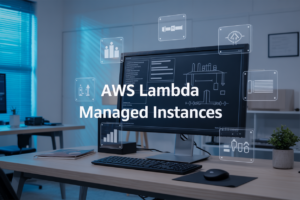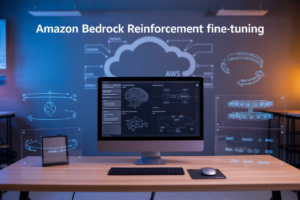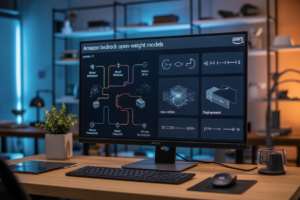You know that feeling when you’re on a plane and suddenly think, “Wait, who’s actually ensuring this thing stays in the air?” That’s exactly how most IT directors feel about their cloud providers right now.
Your company’s most sensitive data – customer information, financial records, proprietary algorithms – all sitting on someone else’s servers. Are cloud service providers truly as secure as they claim to be?
I’ve spent the last decade auditing security protocols for Fortune 500 companies, and what I’ve uncovered about cloud security might surprise you. Some providers are fortresses. Others? Digital Swiss cheese.
By the end of this post, you’ll know exactly which questions to ask before trusting anyone with your cloud infrastructure – and why the provider promising “military-grade encryption” might be the last one you should trust.
Understanding Cloud Service Providers and Their Security Claims
How major cloud providers define security in their marketing
Cloud giants like AWS, Azure, and Google Cloud paint themselves as digital fortresses. They boast about “military-grade encryption,” “impenetrable infrastructure,” and “bulletproof security” in glossy marketing materials. The messaging is crystal clear: your data couldn’t be safer anywhere else. But scratch beneath the surface, and questions emerge.
Common security features advertised across platforms
Look at any cloud provider’s website and you’ll spot the same security greatest hits: encryption (at-rest and in-transit), identity management, access controls, network security, and compliance certifications. They all promise 24/7 monitoring, automatic threat detection, and rapid response teams. These features form the backbone of their security sales pitch.
Certifications and compliance standards cloud providers pursue
Cloud providers collect compliance certifications like merit badges. ISO 27001, SOC 2, HIPAA, PCI DSS, GDPR readiness – the alphabet soup is impressive. These third-party validations serve dual purposes: they actually improve security posture while functioning as powerful marketing tools that open doors to regulated industries like healthcare and finance.
The promise vs. reality gap in cloud security
The glossy brochures don’t mention the shared responsibility model fine print. Cloud providers secure their infrastructure, but you’re still on the hook for configuring everything correctly. Many breaches happen not because the cloud failed, but because customers misunderstood their security obligations. The reality: cloud security is a partnership, not a handoff.
Security Architecture of Leading Cloud Services
A. Data encryption standards and implementation
Top cloud providers don’t mess around with your data. They’re using AES-256 encryption (the gold standard) for data at rest and TLS 1.3 for data in transit. The really good ones also offer customer-managed keys, so you—not them—control who sees what. No shortcuts here.
B. Identity and access management frameworks
Cloud IAM isn’t just about passwords anymore. We’re talking zero-trust architectures, multi-factor authentication, and role-based access controls that make it nearly impossible for bad actors to move laterally through systems. AWS, Azure, and GCP all build these safeguards right into their platforms.
C. Network security measures and isolation techniques
Cloud networks are segmented like Fort Knox. Virtual private clouds, security groups, and microsegmentation create isolation between customers. Traffic filtering happens at multiple layers, and AI-powered threat detection spots weird behavior before humans even notice something’s off.
D. Physical security of data centers
Ever tried getting into a cloud data center? Good luck. These facilities have biometric access, 24/7 guards, motion sensors, and video surveillance that would make a spy movie jealous. Microsoft alone spends over $1 billion annually just on physical security measures.
E. Disaster recovery and business continuity protocols
The cloud is built to survive apocalypse-level events. Geographic redundancy across multiple regions means your data lives in several places simultaneously. Automated failover systems can switch to backup infrastructure in seconds, not hours. Your on-premise setup could never.
Notable Cloud Security Breaches and Their Lessons
Notable Cloud Security Breaches and Their Lessons
A. Analysis of significant cloud security incidents (2020-2025)
The cloud security landscape has been rocked by some jaw-dropping breaches recently. Remember the 2023 Microsoft Azure breach? Hackers gained access to thousands of corporate emails because of a single compromised OAuth token. Then there’s the infamous 2022 AWS incident where misconfigured S3 buckets exposed sensitive data from over 50 Fortune 500 companies. These weren’t just minor hiccups – they were wake-up calls.
B. How breaches occurred despite security measures
Cloud providers spend billions on security, yet breaches still happen. The dirty little secret? It’s often the human element. Take the 2024 Google Cloud Platform incident – attackers didn’t break through sophisticated defenses but instead exploited default configurations that customers never changed. Or consider the 2021 Salesforce breach where phishing attacks targeted admin credentials. The strongest locks don’t matter if someone hands over the keys.
C. Provider response and remediation effectiveness
When things go sideways, how providers respond makes all the difference. Amazon’s handling of the 2022 S3 breach? Honestly disappointing – taking nearly 72 hours to fully contain the issue. Contrast that with Microsoft’s Azure response team in 2023, who deployed fixes within hours and provided transparent communication throughout. Oracle Cloud’s 2024 database exposure showed middle-ground response – quick fixes but poor communication left customers in the dark for days.
D. Long-term impact on affected businesses
The aftermath of cloud breaches sticks around long after headlines fade. Companies hit by the 2021 Salesforce breach saw customer trust plummet – with measurable revenue drops averaging 18% over the following quarters. The financial services firms caught in the 2024 Google Cloud incident faced regulatory fines exceeding $75 million collectively. Beyond immediate costs, these breaches created lasting operational changes, with 67% of affected organizations implementing zero-trust architectures afterward.
Shared Responsibility Model: Where Provider Security Ends
Understanding the division of security responsibilities
Think your data’s completely safe because you use AWS or Azure? Not so fast. Cloud providers secure their infrastructure, but your apps and data? That’s on you. This division of duties—the shared responsibility model—means while they handle physical security, you’re responsible for access controls and data encryption.
Common customer misconfigurations that lead to vulnerabilities
Cloud misconfigurations are like leaving your front door unlocked in a safe neighborhood—it’s asking for trouble. The most dangerous mistakes? Public S3 buckets with sensitive data, default credentials that never got changed, overly permissive IAM policies, and unpatched vulnerabilities in your applications. These aren’t edge cases—they’re everyday blunders.
Areas providers typically don’t secure (and why you should know)
Your cloud provider isn’t watching your back on everything. They don’t monitor your user accounts for suspicious behavior, secure your custom applications, or ensure your data is properly classified and protected. And that misconfigured database you deployed? Totally your problem. Understanding these blind spots is critical to actually being secure, not just feeling secure.
Tools provided vs. tools required for comprehensive security
Cloud providers give you security tools, but they’re just the starter pack. Native tools like AWS CloudTrail or Azure Security Center are solid foundations, but for real protection, you’ll need third-party solutions for comprehensive SIEM, vulnerability management, and advanced threat detection. It’s like having a car with basic features—sometimes you need to add those premium upgrades.
Evaluating Cloud Provider Security Beyond Marketing
Key security questions to ask potential providers
Don’t get dazzled by flashy marketing from cloud providers. Ask them directly: Where’s my data physically stored? Who can access it? What encryption methods do you use? How quickly will you notify me of breaches? Can I see your latest penetration test results? Their answers—or awkward silences—tell you everything about their actual security posture.
Red flags in service level agreements
Those SLAs? They’re hiding some serious red flags if you know where to look. Watch out for vague security responsibilities, minimal breach notification timeframes, and generous “acceptable” downtime percentages. The worst offenders? Agreements that let providers change security terms without notifying you or those with zero financial liability for security incidents they cause.
Third-party security audits and their value
Third-party audits strip away the marketing fluff. SOC 2 Type II reports show a provider’s been tested over time, not just on a good day. ISO 27001 certification means they’ve built security into their DNA. Don’t just ask if they have these credentials—demand to see the actual reports and check the scope. Many providers showcase certifications covering only a tiny slice of their operations.
Comparing security features across major providers
| Provider | Encryption at Rest | Customer-Managed Keys | Zero Trust Options | Compliance Certifications |
|---|---|---|---|---|
| AWS | AES-256 | Yes (KMS) | Advanced | 90+ global |
| Azure | AES-256 | Yes (Key Vault) | Integrated | 100+ global |
| AES-256 | Yes (Cloud KMS) | Identity-Aware | 50+ global | |
| IBM | AES-256 | Limited | Basic | 40+ global |
Strengthening Your Cloud Security Posture
Essential security controls to implement regardless of provider
You can’t just cross your fingers and hope for the best with cloud security. Every business needs robust access controls, encryption for data (both at rest and in transit), regular vulnerability scanning, and automated patch management. Don’t forget network segmentation and backup systems that actually work when you need them.
Monitoring and logging best practices
Continuous monitoring isn’t optional anymore—it’s survival. Set up real-time alerts for suspicious activities, maintain comprehensive audit logs, and establish clear visibility across your entire environment. The security tools collecting dust don’t help anyone. Regularly review those dashboards and reports to spot trouble before it explodes.
Multi-cloud security strategies
Running multiple clouds? You need a unified security approach. Implement consistent policies across all providers, use cloud-agnostic security tools, and create a centralized visibility dashboard. The fragmentation headache is real, but standardized security frameworks and automated compliance checks can save your sanity.
Security automation techniques for consistent protection
Manual security is yesterday’s game. Today, you need infrastructure-as-code with security guardrails, automated compliance scanning, and continuous integration pipelines with built-in security checks. The real game-changer? Automated response systems that contain threats before your security team finishes their morning coffee.
Employee training to prevent security compromises
Your fanciest security tech means nothing if Dave from accounting clicks every suspicious link. Create engaging security awareness programs, run realistic phishing simulations, and build a strong security culture. Make training relevant to people’s actual jobs and celebrate when they spot threats—positive reinforcement works wonders.
Regulatory Considerations in Cloud Security
Regulatory Considerations in Cloud Security
A. Industry-specific compliance requirements
Banks face PCI DSS for payment data while healthcare orgs tackle HIPAA for patient records. Your cloud provider must meet these standards or you’re toast when auditors come knocking. No shortcuts here—regulators don’t care if your data lives on someone else’s servers.
Cloud Security: Balancing Trust with Vigilance
Cloud service providers offer robust security measures, but no system is impenetrable as demonstrated by notable breaches. The shared responsibility model clarifies that while providers secure the infrastructure, customers must protect their data and applications. Evaluating providers requires looking beyond marketing claims to assess compliance certifications, encryption practices, and security architecture.
To maximize cloud security, implement strong access controls, encrypt sensitive data, regularly update security configurations, and maintain comprehensive monitoring. Stay informed about evolving regulations like GDPR and HIPAA that impact your cloud deployments. Remember that cloud security isn’t about finding the perfect provider, but creating a comprehensive security strategy that combines provider capabilities with your own vigilant practices and policies.



















